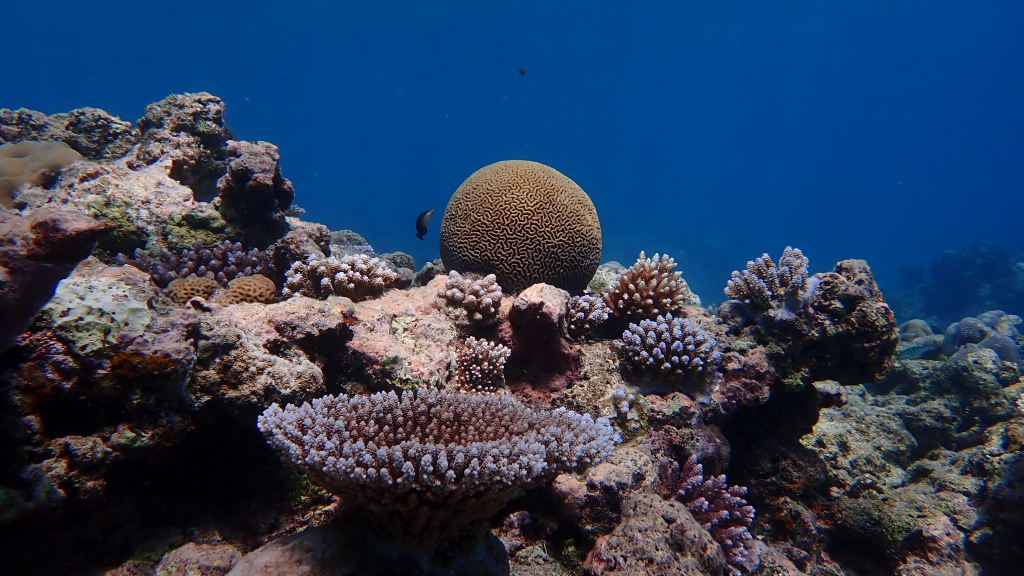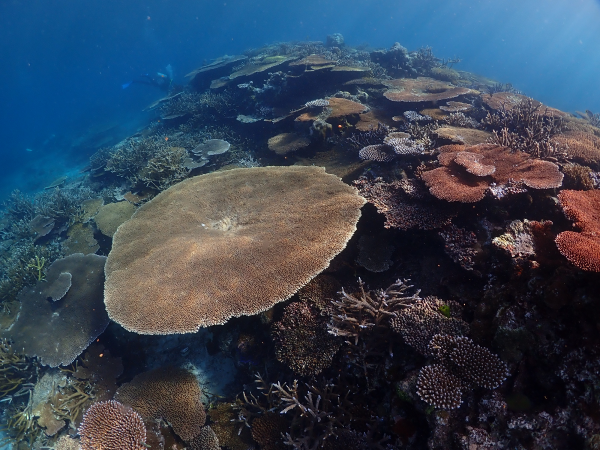Pacific coral reef shows potential historic increase in climate resistance
23 August 2023 | By: Newcastle University | 3 min read
A new study has revealed that coral reefs in one part of the Pacific Ocean may have adjusted to higher ocean temperatures.
This could reduce future bleaching impacts of climate change, provided there is global action on reducing carbon emissions. Read on to discover how the Newcastle University-led study offers a glimmer of hope for the future of coral reefs.
Contents
- What did the study involve?
- What is coral bleaching?
- A need for carbon emission reductions
- The consequences of coral resilience
- A collaboration with the University of British Columbia
- The future of coral reefs
- You might also like
What did the study involve?
This study focused on the Pacific Island nation of Palau and has shown that historic increases in the thermal tolerance of coral reefs are possible. The results demonstrate how this capacity could reduce future bleaching impacts if global carbon emissions are cut down.
Drawing on decades of field observations, the scientists modelled many possible future coral bleaching trajectories for Palauan reefs, each with a different simulated rate of thermal tolerance enhancement.
They found that if coral thermal tolerance continues to rise throughout the 21st century at the most-likely historic rate, significant reductions in bleaching impacts are possible.
What is coral bleaching?
Coral bleaching happens due to stress, whether this is instigated by a change in temperature, light, nutrients, or coral’s other biological needs. The coral expels the living algae in its tissues – known as zooxanthellae – causing it to become transparent, exposing its skeletons. This makes the coral appear white or bleached.
While bleached corals aren't dead, they're more at risk of starvation and disease. Unless they take up new symbiotic algae once environmental conditions return to normal, bleached corals often die.
Climate change is having a huge impact on the health of coral reefs. Water temperatures that increase even one degree Celsius above typical warm-season levels for weeks or months can trigger mass coral bleaching events.
A need for carbon emission reductions
The need for reducing carbon emissions has never been greater.
Results of the study, published in Nature Communications, confirm that the severity of future coral bleaching will depend greatly on reducing carbon emissions.
Much work has been done to model potential future scenarios and their consequences on the environment. High-frequency bleaching can be avoided at some reefs under low-to-middle emissions scenarios, for example, where the Paris Agreement commitments are fulfilled. However, such bleaching impacts are unavoidable under high emissions scenarios where society continues to rely on fossil-fuelled development.
Study lead author, Liam Lachs, is part of Newcastle University’s Coralassist lab. He said: “Our study indicates the presence of an ecological resilience to climate change, yet also highlights the need to fulfil Paris Agreement commitments to effectively preserve coral reefs,”
“We quantified a natural increase in coral thermal tolerance over decadal timescales which can be directly compared to the rate of ocean warming.
While our work offers a glimmer of hope, it also emphasises the need for continued action on reducing carbon emissions to mitigate climate change and secure a future for these vital ecosystems.”
Study co-author, Dr James Guest, from Newcastle University’s School of Natural and Environmental Sciences, added: “We know that coral reefs can increase their overall thermal tolerance over time by acclimatisation, genetic adaptation or shifts in community structure. However, we know very little about the rates at which this is occurring. This study uses data from a remote Pacific coral reef system and estimates the rate of increase in tolerance since the late 1980s."
"The results provide some hope that reefs can keep up with increasing temperatures, but only if strong action is taken on climate change."
The consequences of coral resilience
Coral reefs harbour remarkable levels of biodiversity, yet also face unprecedented declines due to marine heatwaves and resulting mass coral bleaching and mortality events. To persist under climate change, coral communities need to endure progressively more intense and frequent marine heatwaves.
 A healthy coral reef in Palau in the western Pacific Ocean. Credit: Liam Lachs
A healthy coral reef in Palau in the western Pacific Ocean. Credit: Liam Lachs
The rate at which the thermal tolerance of coral reefs can increase naturally and whether this can match the pace of ocean warming has remained largely unknown. To fill this knowledge gap and offer insights into the future resilience of coral communities, the international team of researchers investigated historic mass bleaching events, with a focus on the case study of the coral reefs of Palau, a remote Pacific Island nation.
The study also tested different levels of global action to mitigate climate change and reduce carbon emissions, investigating four emissions scenarios and their impact on future coral bleaching projections.
A collaboration with the University of British Columbia
This study was the result of a collaborative visit Liam undertook in 2021 to work with Professor Simon Donner, at the University of British Columbia's Climate and Coastal Ecosystems Laboratory.
“This study shows the potential for some coral reefs to become more resilient to future climate change-fuelled heatwaves,” Prof. Donner said.
“That resilience, however, can also come at a cost, in terms of reduced reef diversity and growth. Without sharp cuts in greenhouse gas emissions over the next two to three decades, the reefs in the Pacific won’t provide the resources and protection from waves that Pacific peoples have depended upon for centuries.”
The future of coral reefs
The study’s findings reveal that the thermal tolerance of corals in Palau has likely increased at a rate of 0.1 °C per decade since the late 1980s. This increase suggests that natural mechanisms, such as genetic adaptation or acclimatisation of corals or their symbiotic microalgae, could have contributed to the enhancement of coral thermal tolerance.
Study co-author Professor Peter Mumby of the University of Queensland, and the Palau International Coral Reef Center reflects that “some of the upcoming challenges will be to disentangle which mechanisms have driven these potential shifts in tolerance, and to understand the possibility of continued future increases in thermal tolerance.”
You might also like
- Read the paper: Lachs, L., Donner, S.D., Mumby, P.J. et al. Emergent increase in coral thermal tolerance reduces mass bleaching under climate change. Nat Commun 14, 4939 (2023).
- Explore further insights into the study's findings by reading our press release and Liam Lachs' article for The Conversation.
- Find out more about study author, Liam Lachs and the Coralassist lab.
- Explore our School of Natural and Environmental Sciences and its Marine Science Research
